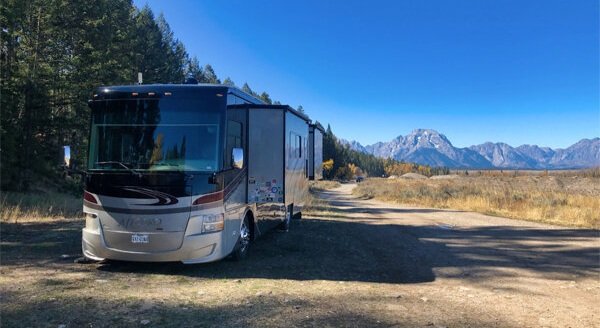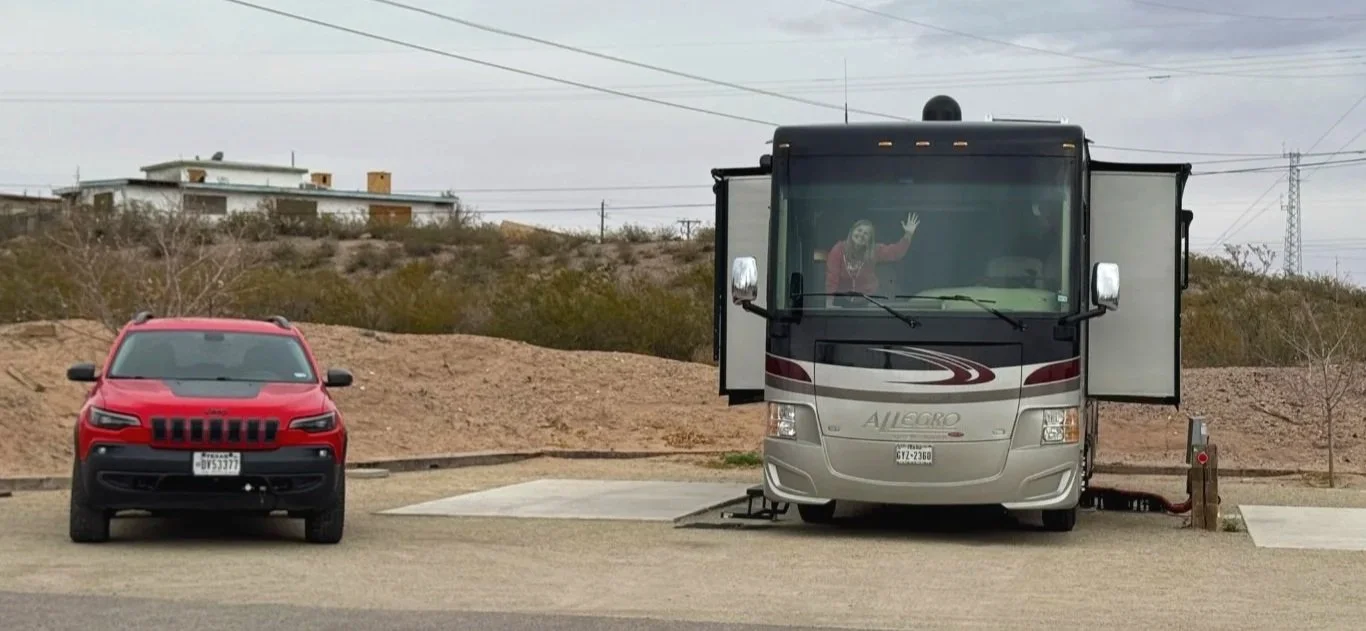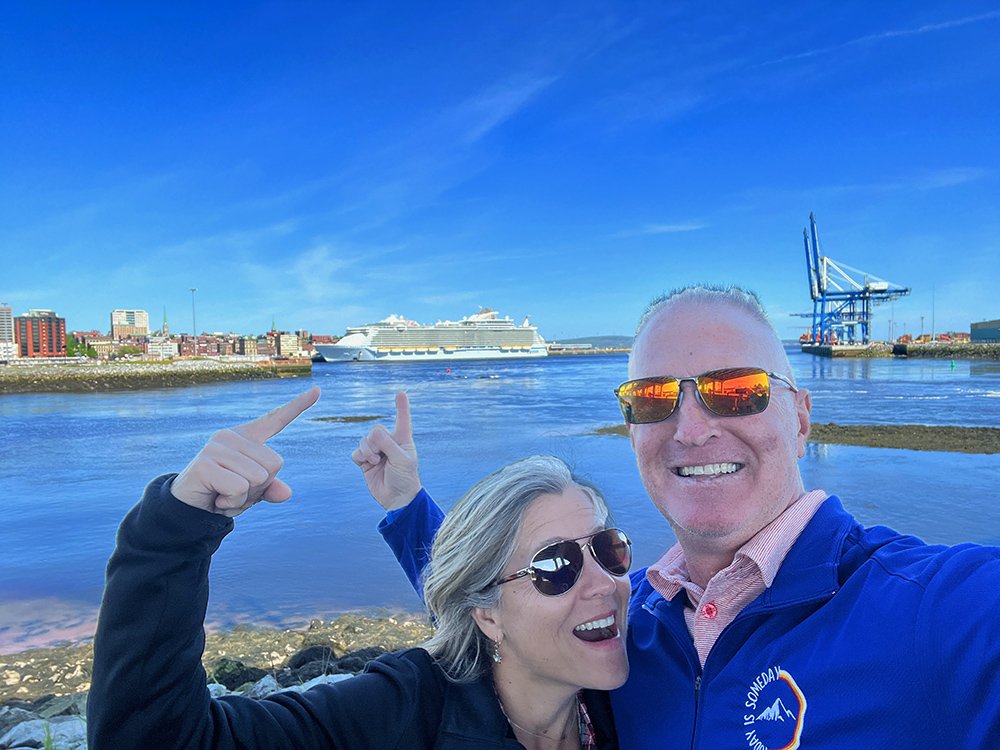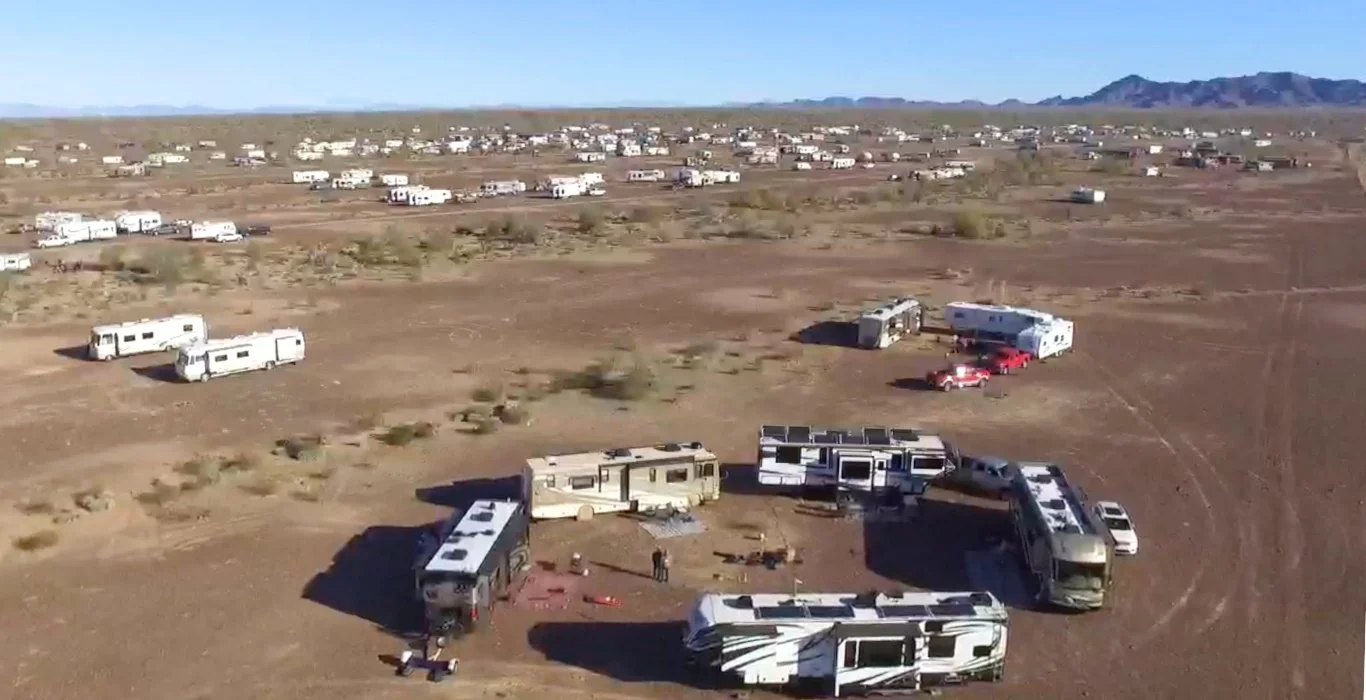RV Electrical: What You Need to Know
Disclosure: The links below may be affiliate links that are at no additional cost to you. When you use our links, we may earn some extra beer money, but it won’t be enough for Phil’s ice cream habit or a batch of Stacy’s famous margaritas (recipe here).
When you reach into your fridge for that cold drink, do you wonder how it stays cold when the RV is not plugged into power? Today, we are walking through the basics of RV electrical. We will show you step by step, or should I say component by component how that coffee pot turns on when you boondock. So let’s talk about what you need to know about RV electrical.
RV Electrical Diagram
Common RV Electrical Diagram
Above is a diagram of an average RV electrical system. Not every RV electrical system will look exactly like this one. But they will be similar. The diagram has been simplified to make it easier to follow. But even simplified, it can be confusing. So let's back up and take it step by step and component by component!
Before we dive in, this is where I tell you neither of us are electricians, or RV experts, or RV technicians. We are RVers just like you, and we are sharing what we have learned along the way. And trust me when I say if I can learn this stuff, anyone can!
Boondocking with Harvest Hosts Use our affiliate code YOUMERV and save 15%.
power while Boondocking
RV electrical solar diagram
You just found an epic boondocking location, and you want to stay there as long as possible. Can you power the fridge? Will you be able to brew a pot of coffee? Of course, you can! This is where we'll start. That's right, our review of power will begin without power!
If you have solar panels, this is the place power will enter your RV while boondocking. Of course, we are assuming it is a beautiful, sunny day, and you are not parked under shade trees. (We will address rain and clouds a little farther down in the discussion).
The solar panels absorb warm, beautiful sunshine. The solar panels will turn the sun into energy and send it to your solar controller.
The solar controller regulates the power produced by the solar panels. It prevents too much power from going to the batteries all at once and prevents the batteries from overcharging.
The power will travel from the solar controller to the batteries. Speaking of batteries, do you know what type of batteries are in your RV? Have you seen them lately? Do your batteries require maintenance? We will go over types of RV batteries and which is the best fit for your camping style in our next blog post. So be sure to come back and check that out!
****If you don't have solar power, skip over the solar power section and enter the diagram at the batteries.
Let's continue down the power trail. As the current leaves the batteries, it will come to a fork in the road. Your batteries will send power in two different directions.
RV batteries are 12 volts (V) direct current (DC) current, so any items that use 12 volts DC power can easily accept power from the batteries. The batteries send power to the DC fuse box, and the fuse box sends the power to items such as water pumps, USB ports, smoke detectors, fantastic fans, and some lights.
The second location the RV batteries send power is to the inverter. The inverter may be a stand-alone unit in your RV, or it may be a combo unit. Combo units can invert, convert and charge (more on that in a bit). Not all RVs will have an inverter. Does yours?
The inverter is essential. It takes 12V DC power and inverts it to 110V Alternating current (AC). Electrical outlets run on 110V AC power, allowing you to run your appliances on your batteries while unplugged.
RV electrical batteries to 110v
After power leaves the inverter in its new 110V form, it heads to the AC breaker box. Power leaves the breaker box and goes to your outlets powering all of your favorite appliances, including the refrigerator, hairdryer, instant pot, water heater, coffee maker (most importantly), and any other item you plug into your regular outlets.
AC vs DC
Let's take a minute to talk about AC and DC current for those who need a little clarification.
AC
The power that flows in a sticks and bricks is called alternating current (AC). The direction of the current reverses or alternates 60 times per second. This is the power you use every time you plug an appliance into an outlet.
DC
Batteries and solar cells produce direct current (DC). The positive and negative terminals of a battery are positive and negative, and the current flows in the same direction between those two terminals.
Boondocking on Cloudy Days
In a perfect world, every day is sunny, and the skies are always blue. But if you are caravaning with us, you know that is not always the case. Occasionally, we feel a little like Linus with a black cloud hanging around. How do we charge the batteries on days when there is no sunshine? For us, it's easy! We go old school with our generator.
Boondocking at a Harvest Hosts Winery in New York
Generator power
Decibel safe range chart
If you don't have solar, the generator will be your lifeline when you are unplugged. During our first year as full-time RVers, we used our generator exclusively for power while boondocking. We discovered so many magical locations in the first year. Thank goodness we were not afraid to turn on that generator and give boondocking a try.
There are many different brands, sizes, shapes, and colors of generators used while RVing. We have an onboard generator that is standard with our RV. If your RV does not come with an onboard generator, you can purchase one for boondocking.
But please, do your homework. Not all generators are the same. After choosing the generator size that is best for your RV, take a look at the decibel levels. Please, purchase the quietest generator that you can afford. Trust me, after listening to the generator for 6-8 hours a day for a week, you will wish you had spent the extra cash for fewer decibels! And for the love of Pete, PLEASE love the birds and your neighbors enough to leave your coal eating, construction-grade, deafening generator at home!
If you are looking for a generator, the Best Quiet RV Generators – Decibel & Noise Test is a great place to start!
Rv electrical with generator and AC breaker box
RV Electrical with a Generator
When you turn on the onboard generator, it sends power to the transfer switch. The transfer switch attaches the generator to your electrical system. It switches the electrical input between the generator and the power pedestal. The transfer switch prevents electrical input from entering the RV from both sources at the same time.
The power produced by the onboard generator is 110v, which enables it to travel from the transfer switch to the AC breaker box. The AC breaker box sends power to two locations. The first location is the 110v outlets to power all the appliances, as discussed earlier in the boondocking section.
***If you do not have an onboard generator, there will not be a transfer switch.
The second component to receive power from the breaker box is the converter. The converter will change the power from 110vac to 12vdc. Every RV will have a converter installed. Without it, you will not be able to charge your batteries.
Your RV may have a device, as we mentioned above that that is capable of tackling several jobs. The device we use is a Magnum 3000 watt 12v DC hybrid inverter/charger. This monster of a machine will convert 110 volt AC power to 12 volt DC power. It will invert 12-volt power to 110 volts. And it also assists in the charging of our batteries.
Find this Magnum inverter on Amazon
Back to the subject at hand: The power flow through your RV.
RV electrical generator diagram
The inverter sends power in two directions, first, to the DC fuse box, which sends power to all the 12v items in your RV as discussed above. Second, power is sent to the batteries. This is how the generator charges your batteries while you are unplugged from shore power.
I bet you are ready to find those epic views and unplug for a bit! I know I am!
Our view while boondocking at Las Cienegas National Conservation Area, AZ
RV Electrical on the PEDESTAL
Now that you know the route of power while unplugged, the rest is easy! When you plug your 30 or 50 Amp cord into the power pedestal (after you turn off the breaker, of course! Don't get me started on that one!), the current direction is very similar to the generator.
50 amp plug
RV electrical 50 amp and breaker box
The power travels down the power cord into the transfer box. The transfer box sends the power to the AC breaker box. After that, the power travels the same route as the generator. And that's it! See easy, right?
As stated earlier, if you don't have an onboard generator, then you won't have a transfer switch. Power will flow from your 30 or 50 amp cord straight to your AC breaker box.
Your RV Electrical
It is important to understand that your RV may have different components than ours. Knowing what components your RV has installed will allow you to understand the power capabilities of your RV. While every RV has a converter, not every RV has an inverter. This article aims to help you understand each component and what it can do for you. Now get out there and open some doors!
RV Electrical Diagram without Solar
The diagram below is the completed diagram without solar power.
RV Power Assessment
If you need help assessing your power usage there are some companies that will help you. Battle Born Batteries is one of those. If you are planning to upgrade to Battle Born lithium they will help you figure out your electrical needs. The decision of how much solar or lithium you need in your RV will depend on the number of amp hours you use on a daily basis.
RV Electrical: What You Need to Know Walk Through
More RV Electrical Information
We just tipped the basics of RV Electrical. If you want to dive in a little deeper, we have just the place for you. Matt from Adventurous Way did a presentation at the Escapees Bash discussing RV power. It is an excellent video!
Meet Stacy! Stacy and her husband, Phil, are a wanderlust couple who have been roaming the great USA for an epic 7 years! They ditched the daily grind to embark on thrilling adventures and inspire fellow dreamers to chase their travel dreams. Curious about how they do it? Check out their awesome YouTube channel, Today is Someday, where they're spilling all the secrets to living a life on the move. Get ready to pack your bags and join them on this incredible journey.
Today is Someday, ALL RIGHTS RESERVED 2022






























